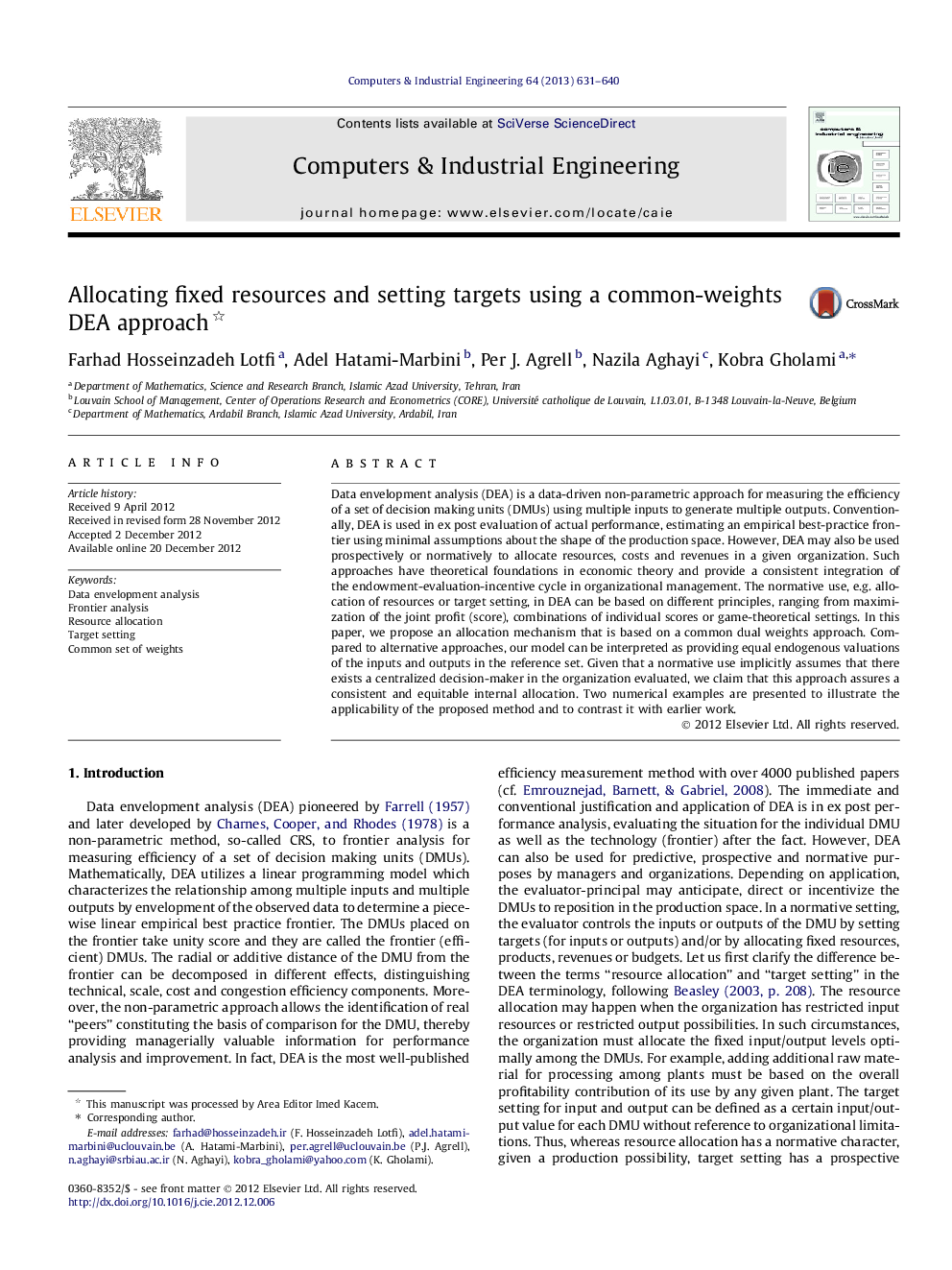| Article ID | Journal | Published Year | Pages | File Type |
|---|---|---|---|---|
| 1134133 | Computers & Industrial Engineering | 2013 | 10 Pages |
Data envelopment analysis (DEA) is a data-driven non-parametric approach for measuring the efficiency of a set of decision making units (DMUs) using multiple inputs to generate multiple outputs. Conventionally, DEA is used in ex post evaluation of actual performance, estimating an empirical best-practice frontier using minimal assumptions about the shape of the production space. However, DEA may also be used prospectively or normatively to allocate resources, costs and revenues in a given organization. Such approaches have theoretical foundations in economic theory and provide a consistent integration of the endowment-evaluation-incentive cycle in organizational management. The normative use, e.g. allocation of resources or target setting, in DEA can be based on different principles, ranging from maximization of the joint profit (score), combinations of individual scores or game-theoretical settings. In this paper, we propose an allocation mechanism that is based on a common dual weights approach. Compared to alternative approaches, our model can be interpreted as providing equal endogenous valuations of the inputs and outputs in the reference set. Given that a normative use implicitly assumes that there exists a centralized decision-maker in the organization evaluated, we claim that this approach assures a consistent and equitable internal allocation. Two numerical examples are presented to illustrate the applicability of the proposed method and to contrast it with earlier work.
► The common-weights DEA method is developed to deal with total weights flexibility in DEA. ► An alternative model is developed to allocate the fixed resources fairly to the units. ► Simultaneously, the proposed model is able to allocate the expected common increase of the outputs to the units. ► By using the proposed allocation mechanism, all DMUs will be efficient. ► We compare the proposed framework with the present methods in the literature.
